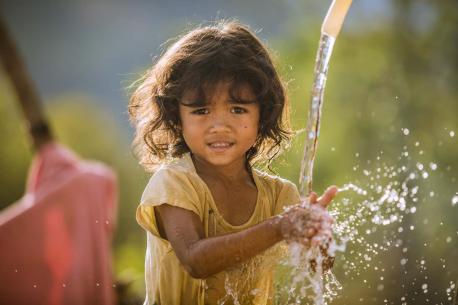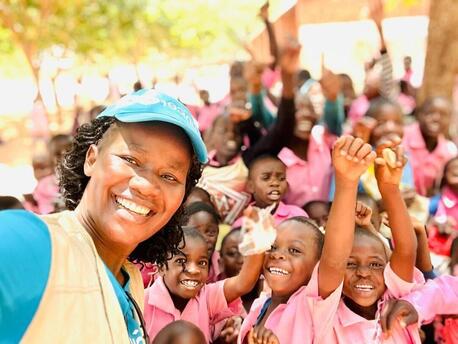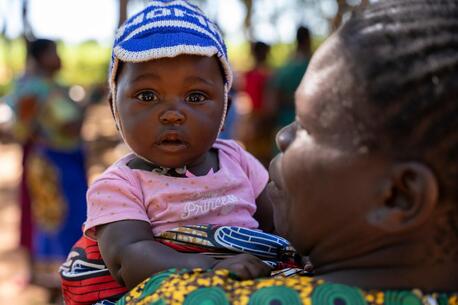
A Guide to Sustainable Living
Do you want to make the world a better place for children today and future generations? Here are seven ways you can help by going green.
Do you want to make the world a better place? Reduce poverty, clean up the environment, combat climate change, support fair wages and see that every child has a chance to survive and thrive? Well, you can get started right now by looking for ways to live a more sustainable lifestyle.
International laws and sound environmental policies are needed to protect the planet, but we have a vital role to play, too. Nearly every decision we make — about how we go to work, where we shop, what we consume, which products we use to keep our home and everything in it clean — is an opportunity to make a healthy choice for the planet. Even children can take steps to preserve the environment and ensure a brighter future for all.
What Is Sustainable Development?
In the past, economic development was driven by a limited range of objectives with little consideration for the future. Consequently, today, more than 1 billion people live in poverty and many others experience inequality, unfair treatment and discrimination. Though the world has made significant progress in improving the lives of children, unequal opportunities have left millions living in poverty, dying before they turn five, without schooling and suffering chronic malnutrition.
In the early 1990s, sustainable development emerged as an alternative approach designed to redress those inequities, safeguard the environment and preserve resources for the future. In 2000, the Millennium Development Goals, a global framework for achieving those objectives, were established to improve critical areas of human development, including child survival, education, and safe water.
For the next 15 years, the MDGs guided development efforts and measured results. They weren’t perfect, though. Too many of the poorest and most vulnerable people were left out and the goals failed to address some crucial issues, including violence, exploitation and abuse.
When the MDGs expired in 2015, the UN replaced them with the Global Goals for Sustainable Development. More ambitious, the Sustainable Development Goals (SDGs) aim to prevent child and maternal deaths, end extreme poverty and child marriage and ensure all children, even the poorest and most disadvantaged, can get the education they need to secure prosperous futures.
These 17 goals also seek to preserve the planet for children and future generations by addressing climate change, energy use, land and water management and consumption.
Environmental degradation is especially hard on children. Droughts, floods and extreme weather can deplete or destroy food supplies, threatening children's health and development. Children are also more vulnerable to diseases caused by unclean water and poor air quality. To protect them now and in the future, UNICEF insisted that ending preventable child deaths be made one of the SDGs and has kept the focus upon equity and children ever since.
What does a sustainable world look like? It is a place where there is no poverty or hunger, and everyone has equal access to clean water, education, health care and the opportunity to pursue satisfying work with fair compensation. Energy is clean, communities husband their resources carefully and consumption is responsible. Conservation dictates both land and water use, and everyone is committed to fighting climate change. It might sound like an unrealistically rosy picture, but we can all take immediate steps to move in the right direction.
7 Ways To Live Sustainably
Commitment at the highest levels of government is key to achieving sustainable development. But each of us has a role to play, too. Here are some simple adjustments we can all make to leave the world a better place for future generations.
1. Get Educated
Understanding the latest news on the most pressing environmental issues is a great place to start. Find out how your actions and habits feed into the problems we face, then see where your elected officials stand on the issues. Armed with this knowledge, you can make informed decisions about who to support and how to take action to create a more sustainable world.
2. Limit Waste
Reducing the waste we generate, especially non-biodegradable waste, is one of the most important things we can do for the environment. So many of the things we throw away end up in landfills or get dumped into the ocean, where they pollute the water and pose a threat to sea life. You and your family can help by reducing the waste you generate to the bare minimum.
Begin by replacing single-use plastic items in your home with reusable versions. Dispense with disposable dining ware and cutlery, straws, plastic bags (of all kinds), to-go cups, take-out containers and water bottles. All of these products now come in reusable alternatives made from stainless steel, bamboo, cotton and other more eco-friendly materials.
Reducing packaging is another way to be kind to the planet. Anything you order and have shipped to you is likely to come with far more packaging than needed, so when possible, support companies that keep packaging to a minimum and shop in person whenever you can. At the grocery store, opt for unwrapped produce and items in bulk and make sure to bring a tote along, so you don't have to ask for a plastic bag or box to get it all home.
3. Limit Atmospheric Emissions
Being mindful of what's released into the atmosphere is just as important as reducing what's discarded on earth. That's why taking steps to limit carbon emissions is another cornerstone of sustainable living.
Airplanes are one of the most significant emissions sources; even short trips have a massive impact on the environment. Limiting flights and choosing to travel by land (or sea) can reduce your carbon footprint and save money, too. But when that’s not possible, choose the most direct route, ideally a nonstop flight. For land travel, take public transportation where it’s available, carpool with friends or co-workers, walk or cycle.
Shopping locally will also cut down on emissions, save you shipping costs and support the businesses in your community. Eating foods grown nearby instead of those shipped from far away reduces transport emissions — plus you'll get fresher options.
If what you're looking for isn't available at your neighborhood shops or accessible via public transportation, consider shopping at an online Fair Trade market. When you shop Fair Trade, you support companies that are committed to a sustainable means of production and safe working environments and fair compensation for their workers.
To support the Fair Trade movement and help children, too, check out UNICEF Market's online collection of beautifully crafted items for the home along with jewelry, clothing and an eclectic line of eco-friendly products. UNICEF Market is committed to improving conditions for vulnerable producers around the world and helping makers build vital businesses that support their families and communities. Plus, a percentage of each UNICEF Market purchase goes toward supporting UNICEF's lifesaving work for children.
4. Conserve Water and Energy
Many easy-to-implement lifestyle changes will conserve water and energy.
Turn the water off while washing your hands and brushing your teeth, take shorter showers, and only run the washing machine and dishwasher when they’re full. Replace standard faucets and showerheads with low-flow models. If your toilets, washing machine or dishwasher are older, chances are they consume a lot of water. If you can afford it, springing for newer models that are more efficient will help cut down on both the water and power you use — and save you money, too.
Similarly, efforts to limit energy use quickly add up to big savings. Turn off lights when you leave the room, unplug appliances that aren’t in use and know what you're looking for before you open the refrigerator door. Skip the drying cycle in the dishwasher, and consider line-drying your clothes if you have space. Use air-conditioning and heating judiciously, and adjust the thermostat when you’re not at home.
5. Avoid Toxic Chemicals
Harmful chemicals lurk in everything, from toiletries to cleaning products. Before you buy new products, look at the list of ingredients. Toxic offenders include oxybenzone, sodium lauryl sulfate, formaldehyde, triclosan, parabens, and chlorine bleach. Switch out your standard products for alternatives from eco-friendly brands. Though more eco-friendly options can be pricier, they don't come with the health risks posed by harsh chemicals. Have the time to get creative? Many home-cleaning products can be replaced with simple DIY solutions.
6. Travel Responsibly
Whether you're on the move for work or pleasure, travel takes a toll on the environment, and it isn't just the carbon emissions doing the damage. Many eco-friendly habits we've worked hard to establish fall by the wayside when we're away from home. But with a little planning, you can go green on the road.
Choose the most sustainable transportation options you can, don’t forget to pack reusable items and remember to conserve water and energy. Beyond that, refuse the daily towel changes in hotels, and leave the miniature toiletries — which use conspicuous amounts of plastic — undisturbed. When traveling for leisure, avoid cruises and all-inclusive resorts, which are prone to waste, and opt for destinations off the beaten path. You'll avoid the crowds and have fun discovering hidden gems.
7. Advocate for Change
We’re all responsible for our own choices, but promoting sustainability in your personal and professional networks can make a real difference. Pushing your workplace to adopt more eco-friendly policies, getting involved in sustainable programs at your child’s school or campaigning for ballot initiatives that protect the environment are ways to build community and create a better world.
If you want to shop for good, UNICEF Market helps makers of handmade artisanal goods build sustainable businesses that support their families and their communities. At the same time, proceeds from every UNICEF Market purchase help to fund UNICEF's work to save and protect the world’s most vulnerable children.
Top photo: UNICEF is committed to protecting children who are especially vulnerable to the impact of climate change, like Thuy, who became malnourished during Vietnam's 2015 drought that destroyed her family's crops. © UNICEF/UN0289751/Viet Hung
HOW TO HELP
There are many ways to make a difference
War, famine, poverty, natural disasters — threats to the world's children keep coming. But UNICEF won't stop working to keep children healthy and safe.
UNICEF works in over 190 countries and territories — more places than any other children's organization. UNICEF has the world's largest humanitarian warehouse and, when disaster strikes, can get supplies almost anywhere within 72 hours. Constantly innovating, always advocating for a better world for children, UNICEF works to ensure that every child can grow up healthy, educated, protected and respected.
Would you like to help give all children the opportunity to reach their full potential? There are many ways to get involved.





